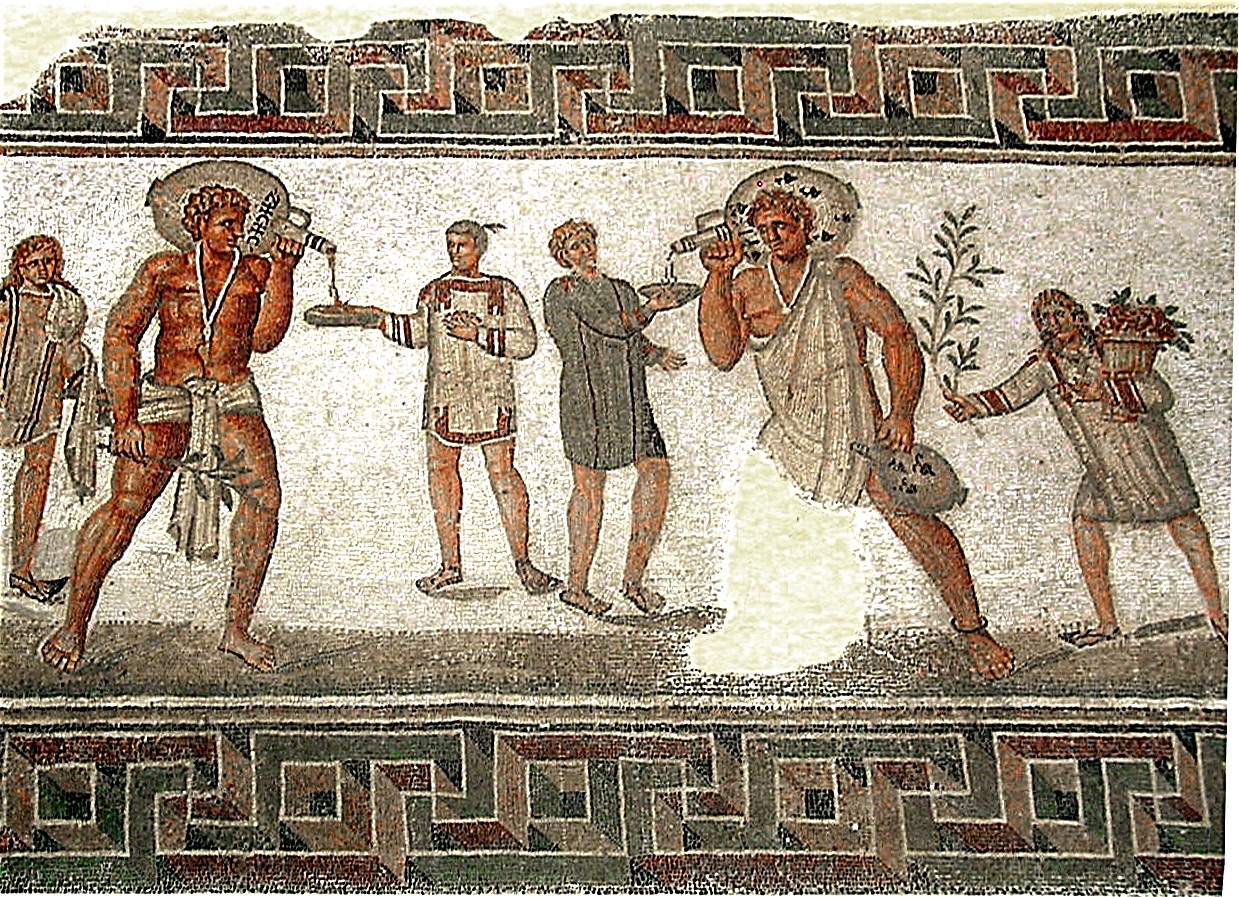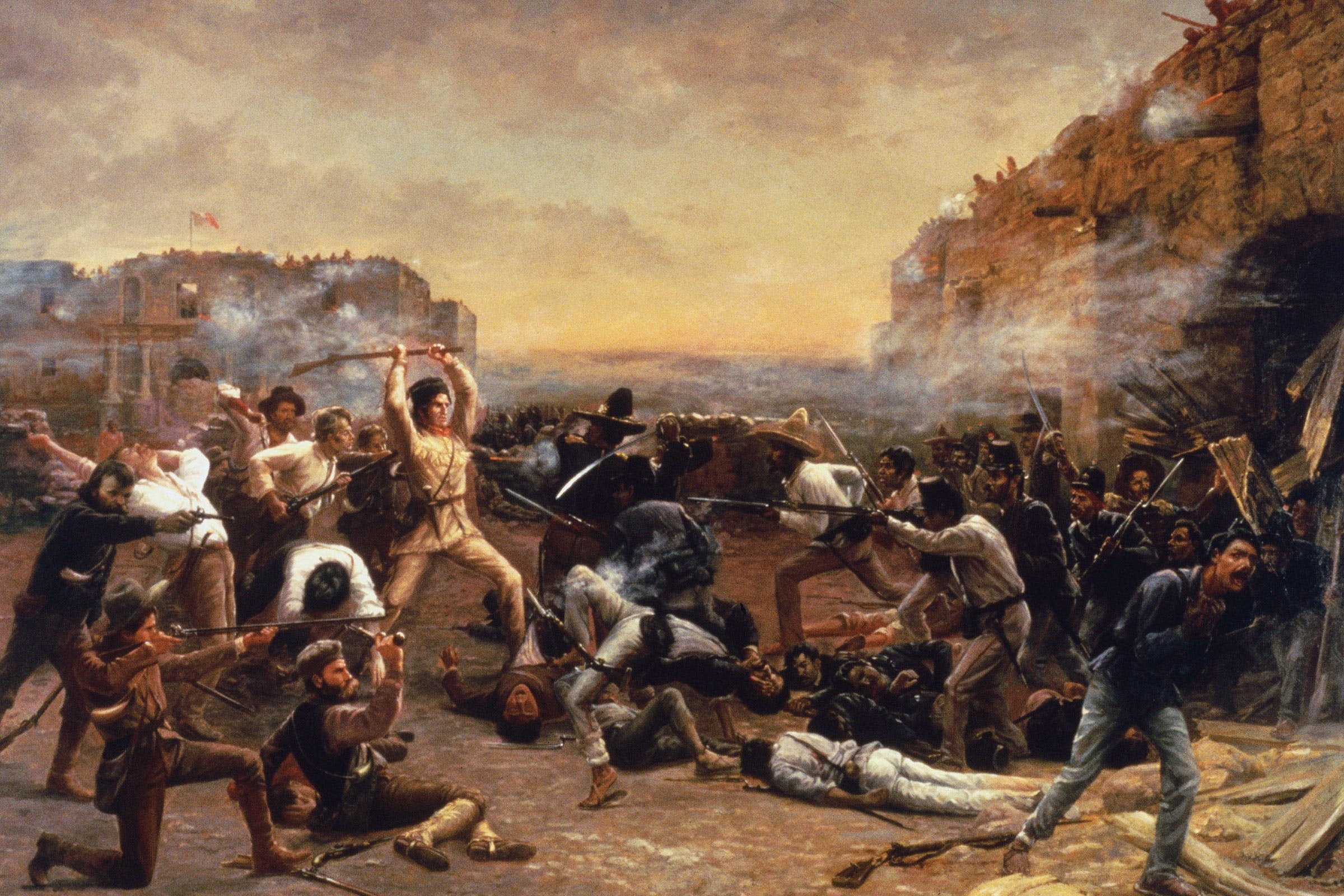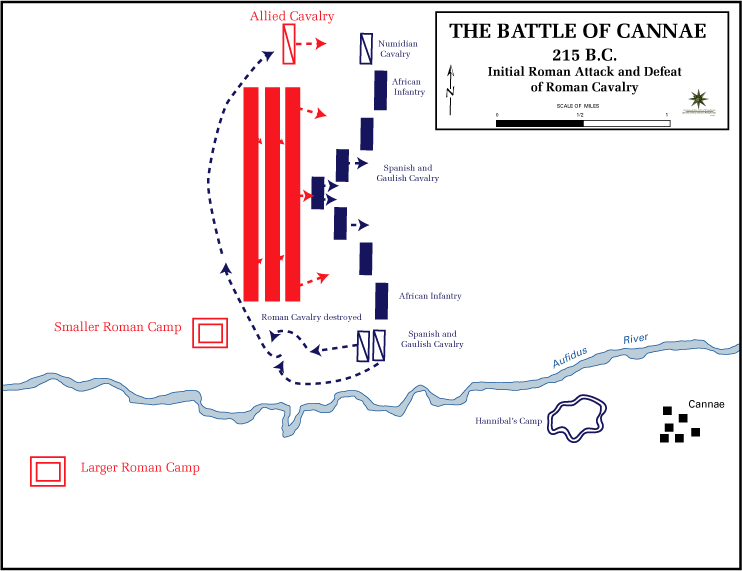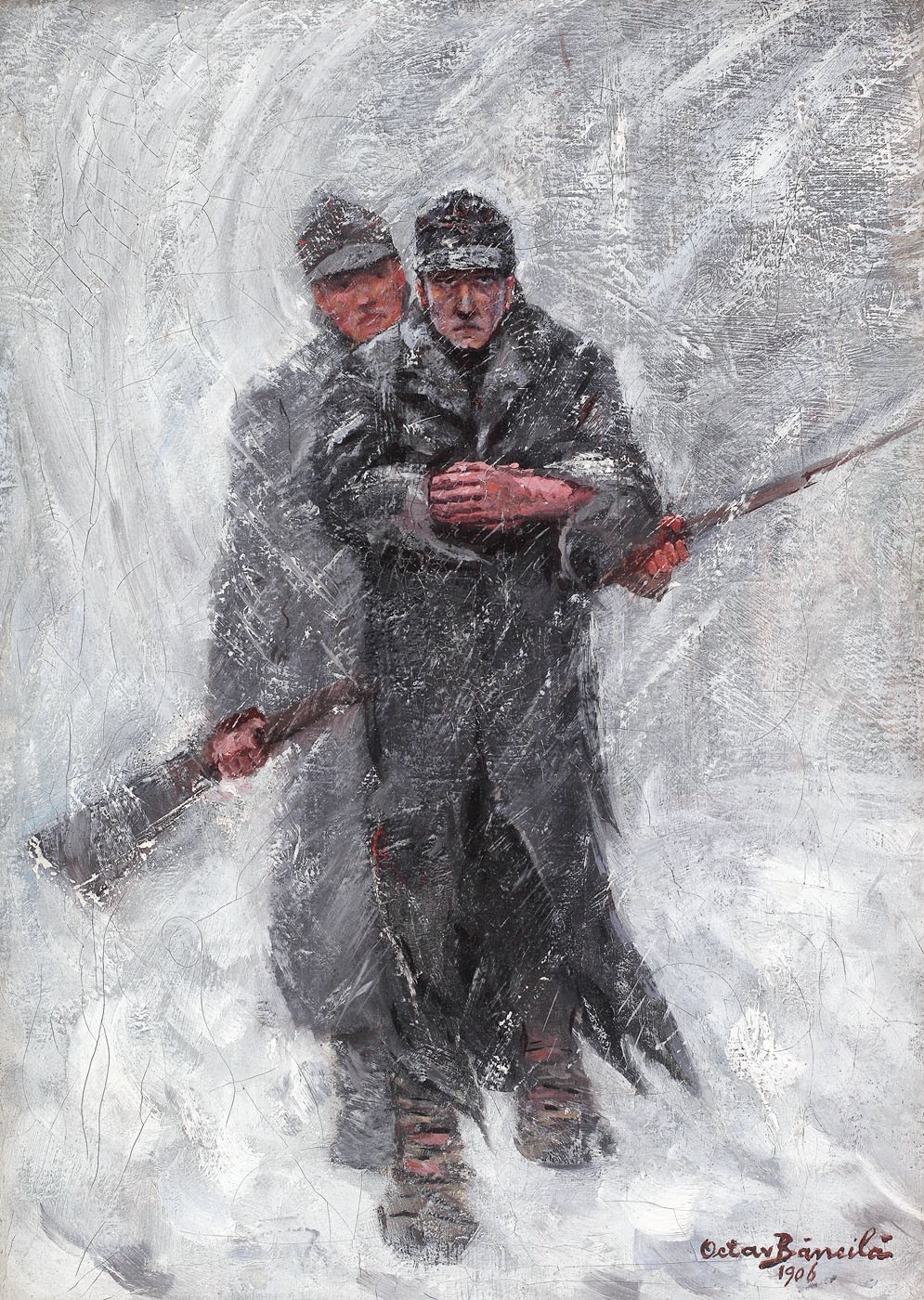|
Battle Of Leptis Parva
The Battle of Leptis Parva was fought in 238 BC between a Carthaginian army of over 30,000 commanded by Hamilcar Barca and Hanno, and approximately 20,000 mutinous foreign soldiers who had served Carthage and North African rebels under Matho in the North African province of Byzacium (in modern Tunisia). The battle was the final major conflict of the Mercenary War and resulted in a decisive victory for the Carthaginians. In 241 BC 20,000 foreign troops who had been employed by Carthage during the First Punic War (264 to 241 BC) mutinied under the leadership of Spendius and Mathos starting the Mercenary War. They were supported by an uprising of Carthage's African neighbors and 70,000 local recruits flocked to join them, bringing supplies and finance. War-weary Carthage fared poorly in the initial engagements of the war, especially under the leadership of Hanno. Hamilcar Barca was given supreme command in 239 BC and slowly turned the tide. In 238 BC Mathos and the remnants of ... [...More Info...] [...Related Items...] OR: [Wikipedia] [Google] [Baidu] |
Mercenary War
The Mercenary War, also known as the Truceless War, was a mutiny by troops that were employed by Carthage at the end of the First Punic War (264241 BC), supported by uprisings of African settlements revolting against Carthaginian control. It lasted from 241 to late 238 or early 237 BC and ended with Carthage suppressing both the mutiny and the revolt. The war began in 241 BC as a dispute over the payment of wages owed to 20,000 foreign soldiers who had fought for Carthage in Sicily during the First Punic War. When a compromise seemed to have been reached, the army erupted into full-scale mutiny under the leadership of Spendius and Matho. 70,000 Africans from Carthage's oppressed dependent territories flocked to join them, bringing supplies and finance. War-weary Carthage fared poorly in the initial engagements of the war, especially under the generalship of Hanno. Hamilcar Barca, a veteran of the campaigns in Sicily (and father of Hannibal Barca), was given jo ... [...More Info...] [...Related Items...] OR: [Wikipedia] [Google] [Baidu] |
Hannibal
Hannibal (; xpu, 𐤇𐤍𐤁𐤏𐤋, ''Ḥannibaʿl''; 247 – between 183 and 181 BC) was a Carthaginian general and statesman who commanded the forces of Carthage in their battle against the Roman Republic during the Second Punic War. He is widely regarded as one of the greatest military commanders in history. Hannibal's father, Hamilcar Barca, was a leading Carthaginian general during the First Punic War. His younger brothers were Mago and Hasdrubal; his brother-in-law was Hasdrubal the Fair, who commanded other Carthaginian armies. Hannibal lived during a period of great tension in the Mediterranean Basin, triggered by the emergence of the Roman Republic as a great power with its defeat of Carthage in the First Punic War. Revanchism prevailed in Carthage, symbolized by the pledge that Hannibal made to his father to "never be a friend of Rome". In 218 BC, Hannibal attacked Saguntum (modern Sagunto, Spain), an ally of Rome, in Hispania, sparking the Second Pun ... [...More Info...] [...Related Items...] OR: [Wikipedia] [Google] [Baidu] |
Slavery In Ancient Rome
Slavery in ancient Rome played an important role in society and the economy. Besides manual labour, slaves performed many domestic services and might be employed at highly skilled jobs and professions. Accountants and physicians were often slaves. Slaves of Greek origin in particular might be highly educated. Unskilled slaves, or those sentenced to slavery as punishment, worked on farms, in mines, and at mills. Slaves were considered property under Roman law and had no legal personhood. Most slaves would never be freed. Unlike Roman citizens, they could be subjected to corporal punishment, sexual exploitation (prostitutes were often slaves), torture and summary execution. Over time, however, slaves gained increased legal protection, including the right to file complaints against their masters. One major source of slaves had been Roman military expansion during the Republic. The use of former enemy soldiers as slaves led perhaps inevitably to a series of ''en masse'' armed rebel ... [...More Info...] [...Related Items...] OR: [Wikipedia] [Google] [Baidu] |
Last Stand
A last stand is a military situation in which a body of troops holds a defensive position in the face of overwhelming and virtually insurmountable odds. Troops may make a last stand due to a sense of duty; because they are defending a tactically crucial point; to buy time to enable a trapped army, person, or group of people to escape; due to fear of execution if captured; or to protect their ruler or leader. Last stands loom large in history, as the heroism and sacrifice of the defenders exert a large pull on the public's imagination. Some last stands have become a celebrated part of a fighting force's or a country's history, especially if the defenders accomplished their goals (or in rare cases, defeated their attackers). Tactical significance A "last stand" is a last resort tactic, and is chosen because the defending force realizes or believes the benefits of fighting outweigh the benefits of retreat or surrender. This usually arises from strategic or moral considerations, ... [...More Info...] [...Related Items...] OR: [Wikipedia] [Google] [Baidu] |
Ruse De Guerre
The French , sometimes literally translated as ruse of war, is a non-uniform term; generally what is understood by "ruse of war" can be separated into two groups. The first classifies the phrase purely as an act of military deception against one's opponent; the second emphasizes acts against one's opponent by creative, clever, unorthodox means, sometimes involving force multipliers or superior knowledge. The term stratagem, from Ancient Greek (, 'act of generalship'), is also used in this sense. are described from ancient to modern times, both in semi-mythical accounts such as the story of the Trojan Horse in Virgil's ''Aeneid'', and in well-documented events such as the flying of the American flag by the British ocean liner RMS ''Lusitania'' in 1915 (whilst the United States was a neutral country) to deter attack by German submarines; they also feature in fiction. The term is given legal meaning within the rules of war. Good faith is required, but at least 17 different type ... [...More Info...] [...Related Items...] OR: [Wikipedia] [Google] [Baidu] |
Set Piece Battle
A pitched battle or set-piece battle is a battle in which opposing forces each anticipate the setting of the battle, and each chooses to commit to it. Either side may have the option to disengage before the battle starts or shortly thereafter. A pitched battle is not a chance encounter such as a meeting engagement, or where one side is forced to fight at a time not of its choosing such as happens in a siege or an ambush. Pitched battles are usually carefully planned, to maximize one's strengths against an opponent's weaknesses, and use a full range of deceptions, feints, and other manoeuvres. They are also planned to take advantage of terrain favourable to one's force. Forces strong in cavalry for example will not select swamp, forest, or mountain terrain for the planned struggle. For example, Carthaginian general Hannibal selected relatively flat ground near the village of Cannae for his great confrontation with the Romans, not the rocky terrain of the high Apennines. Likewise, ... [...More Info...] [...Related Items...] OR: [Wikipedia] [Google] [Baidu] |
African Bush Elephant
The African bush elephant (''Loxodonta africana'') is one of two extant African elephant species and one of three extant elephant species. It is the largest living terrestrial animal, with bulls reaching a shoulder height of up to and a body mass of up to . It is distributed across 37 African countries and inhabits forests, grasslands and woodlands, wetlands and agricultural land. Since 2021, it has been listed as Endangered on the IUCN Red List. It is threatened foremost by habitat destruction, and in parts of its range also by poaching for meat and ivory. It is a social mammal, travelling in herds composed of cows and their offspring. Adult bulls usually live alone or in small bachelor groups. It is a herbivore, feeding on grasses, creepers, herbs, leaves, and bark. The menstrual cycle lasts three to four months, and females are pregnant for 22 months, the longest gestation period of any mammal. Taxonomy ''Elephas africanus'' was the scientific name proposed by Johann Fri ... [...More Info...] [...Related Items...] OR: [Wikipedia] [Google] [Baidu] |
African Forest Elephant
The African forest elephant (''Loxodonta cyclotis'') is one of the two living African elephant species. It is native to humid forests in West Africa and the Congo Basin. It is the smallest of the three living elephant species, reaching a shoulder height of . Both sexes have straight, down-pointing tusks, which erupt when they are 1–3 years old. It lives in family groups of up to 20 individuals. Since it forages on leaves, seeds, fruit, and tree bark, it has been referred to as the 'megagardener of the forest'. It contributes significantly to maintain the composition and structure of the Guinean Forests of West Africa and the Congolese rainforests. The first scientific description of the species was published in 1900. During the 20th century, overhunting caused a sharp decline in population, and by 2013 it was estimated that less than 30,000 individuals remained. It is threatened by habitat loss, fragmentation, and poaching. The conservation status of populations varies across ... [...More Info...] [...Related Items...] OR: [Wikipedia] [Google] [Baidu] |
War Elephant
A war elephant was an elephant that was trained and guided by humans for combat. The war elephant's main use was to charge the enemy, break their ranks and instill terror and fear. Elephantry is a term for specific military units using elephant-mounted troops. Description War elephants played a critical role in several key battles in antiquity, especially in Ancient India. While seeing limited and periodic use in Ancient China, they became a permanent fixture in armies of historical kingdoms in Southeast Asia. During classical antiquity they were also used in ancient Persia and in the Mediterranean world within armies of Macedon, Hellenistic Greek states, the Roman Republic and later Empire, and Carthage in North Africa. In some regions they maintained a firm presence on the battlefield throughout the Middle Ages. However, their use declined with the spread of firearms and other gunpowder weaponry in early modern warfare. After this, war elephants became restricted to non- ... [...More Info...] [...Related Items...] OR: [Wikipedia] [Google] [Baidu] |
Desertion
Desertion is the abandonment of a military duty or post without permission (a pass, liberty or leave) and is done with the intention of not returning. This contrasts with unauthorized absence (UA) or absence without leave (AWOL ), which are temporary forms of absence. Desertion versus absence without leave In the United States Army, United States Air Force, British Armed Forces, Australian Defence Force, New Zealand Defence Force, Singapore Armed Forces and Canadian Armed Forces, military personnel will become AWOL if absent from their post without a valid pass, liberty or leave. The United States Marine Corps, United States Navy, and United States Coast Guard generally refer to this as unauthorized absence. Personnel are dropped from their unit rolls after thirty days and then listed as ''deserters''; however, as a matter of U.S. military law, desertion is not measured by time away from the unit, but rather: * by leaving or remaining absent from their unit, organizati ... [...More Info...] [...Related Items...] OR: [Wikipedia] [Google] [Baidu] |
Monastir, Tunisia
Monastir, also called Mestir ( ar, المنستير ', from the Greek "hermit's cell, monastery"), is a city on the central coast of Tunisia, in the Sahel area, some south of Sousse and south of Tunis. Traditionally a fishing port, Monastir is now a major tourist resort. Its population is about 93,306. It is the capital of Monastir Governorate. Geography Location Monastir is a peninsula surrounded by the Mediterranean Sea on three sides and forming, to the south, the Gulf of Monasti of the same name, which extends to Cap of Ras Dimass. It offers diverse landscapes, in particular its sandy and rocky beaches as well as a cliff stretching over nearly six kilometers. History Monastir was founded on the ruins of the Punic–Roman city of Ruspina. The city features a well-preserved Ribat of Monastir that was used to scan the sea for hostile ships and as a defence against the attacks of the Byzantine fleet. Several ulema came to stay in the ''ribat'' of this peaceful city for ... [...More Info...] [...Related Items...] OR: [Wikipedia] [Google] [Baidu] |





_03.jpg)



